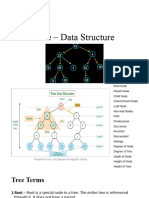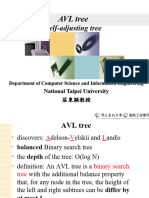0% found this document useful (0 votes)
3 views31 pagesUnit 3 - Non Linear Data Structures
Uploaded by
r242979cCopyright
© © All Rights Reserved
We take content rights seriously. If you suspect this is your content, claim it here.
Available Formats
Download as PPTX, PDF, TXT or read online on Scribd
0% found this document useful (0 votes)
3 views31 pagesUnit 3 - Non Linear Data Structures
Uploaded by
r242979cCopyright
© © All Rights Reserved
We take content rights seriously. If you suspect this is your content, claim it here.
Available Formats
Download as PPTX, PDF, TXT or read online on Scribd
/ 31
























































































